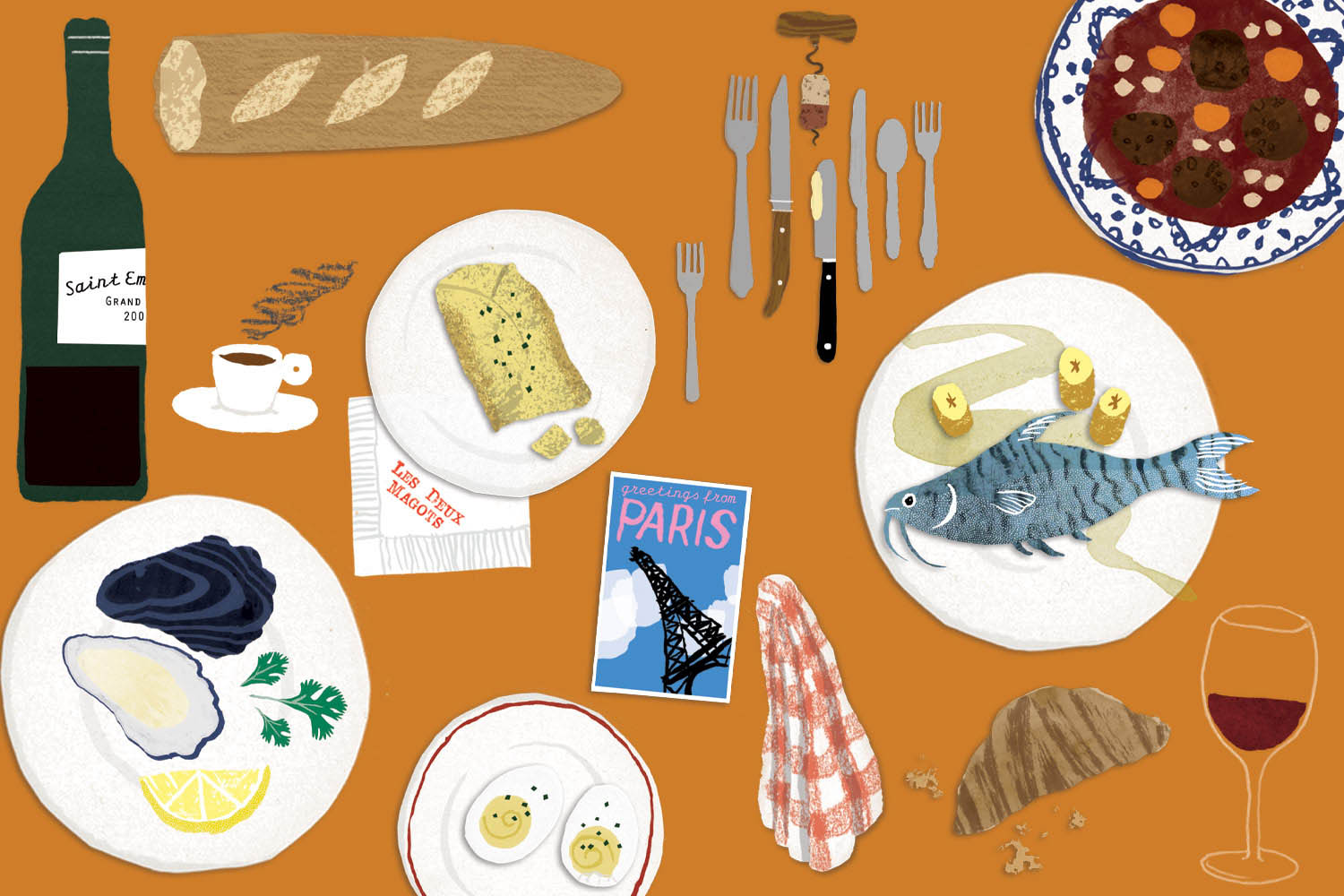Is there a city on Earth that conjures up so many romantic notions of itself and then proceeds to complicate (or puncture) them as offhandedly as Paris does? Between 30 and 50 million people visit the French capital each year, feeding one of the largest tourism sectors of any city in the world. First-timers arrive with visions of cobbled streets and cute little corner bistros serving the perfect boeuf bourguignon. Often they leave disappointed. The city is grimier and more hectic than they anticipated and the boeuf bourguignon (reheated from frozen) is a long way from perfect.
But if you recalibrate your expectations, taking a broader and less misty-eyed view of the place, the rewards can be considerable. Despite having moved to Paris more than a decade ago, the English writer Chris Newens had a nagging sense that his knowledge of the city remained surface level. So he set about digging down to the “richer stew” buried beneath Paris’s many layers of myth. In Moveable Feasts, which won last year’s Jane Grigson Trust award, Newens uses food as his way in. And why not? Paris is obsessed with the stuff. The birthplace of the modern restaurant, it now boasts more than 44,000 dining establishments of drastically varying quality. Its consumption levels are staggering, with nearly 2m tonnes of food entering the capital each year through Rungis, the largest fresh-produce market in the world. The traditions around eating and drinking in Paris run so deep that Newens’s main challenge is to avoid falling into cliche at every step.
In general he navigates the territory adroitly. His writing is engaging, perceptive and clear, with the occasional lyrical foofaraw. Recalling the abattoirs that once populated his neighbourhood, he envisions “a whole phantasmagoria of cutting”. A lamb stew at a Tunisian restaurant, with its vivid scarlet sauce, puts him in mind of “the colour of an ageing star”.
His organising principle is geographic: each chapter of the book corresponds to one of the 20 arrondissements that make up the city, working inwards from 20th to first. Confronting the cliches head-on, he opens at a venerable bistro called Le Mistral, with steak frites on the menu and a copper-clad counter where barflies debate the neighbourhood’s cuisines. In each instance, Newens singles out a dish that represents the arrondissement in some way. Here, it’s aligot, or garlicky mashed potato enriched with silky tomme de vache cheese. So far so indulgently Parisian – except, as Le Mistral’s owner notes, aligot is a specialty of south-western France, which is also where the first bistro owners in Paris hailed from.
As Newens spirals towards the city’s interior, he ventures far beyond traditional French fare. In the 19th arrondissement, he seeks out doner kebabs (easy, given their ubiquity) and tries to re-create them at home (nigh-on impossible when you lack a giant meat spit in your tiny Paris apartment). Next, in the Goutte d’Or neighbourhood of the 18th, he’s on the hunt for a Congolese fish dish called malangwa. These dishes, along with the Vietnamese banh-mi sandwich he devours in the 13th and the couscous in the 11th, are just as representative of modern-day Paris as the entrée-plat-salade-fromage-dessert combo that he identifies with the snooty 16th.
Refreshingly, Newens plays fast and loose with his schema – and in some cases the themes he extracts from each arrondissement seem almost too tangential. Residents of the 12th might be perplexed to find their district being used to explore homelessness problem and the question of how people living rough in the Bois de Vincennes keep themselves nourished. In the 9th, Newens visits a sex club with a brunch buffet to investigate whether the libertine and the gourmand are indeed “bedfellows” (not really, on the evidence of the club’s forlorn sliced meat display).
It’s ultimately to the book’s benefit that Newens makes such diversions – along with others touching on gentrification, protest marches and French colonialism. They expand our sense of the city, taking us off the usual tourist trails into stranger territory that even natives might struggle to recognise. Newens is an amiable guide, and even when he reaches the heart of Paris he has enough humility to acknowledge that his theories on what makes its food culture so special remain incomplete. However deep we delve, there’s always another layer of myth-making to keep us fascinated, frustrated – and hungry for more.
Moveable Feasts: Paris in Twenty Meals by Chris Newens is published by Profile (£18.99). Order a copy from The Observers Shop for £17.09. Delivery charges may apply
Illustration by Lexi Vangsnes

